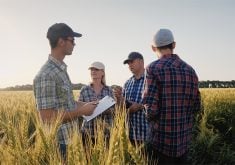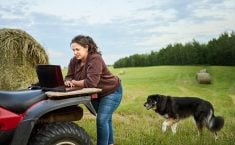Unlike other industries, farming has special tax rules that allow for the transfer of an individual’s shares of a farming corporation to the next generation on a tax-free rollover basis.
For other industries, the value that has accrued on Mom and Dad’s shares are eventually taxed to Mom and Dad, either by way of share redemptions over the years or by a capital gain upon death.
These rules are advantageous in various scenarios, including minimizing overall estate tax liabilities, a tax-free gift of shares to a farming child to compensate for sweat equity that has been earned over the years or to transition an entire farming operation to the next generation without personal tax.
Read Also

Higher farmland taxes for investors could solve two problems
The highest education and health care land tax would be for landlords, including investment companies, with no family ties to the land.
To qualify for this advantage, the child must be a resident of Canada, and the share at the time of transfer must be a share of a family farm corporation.
Timing is really important, and so is the nature of the assets within the corporation at the time of transfer.
To qualify as a family farm corporation under the Income Tax Act, all or substantially all (90 percent) of the fair market value of the property owned by the corporation must be either property used principally (50 percent) in a farming business in Canada, shares/debt of another family farm corporations or a partnership interest.
My colleague, Levi Derksen, recently wrote about the dangers of non-farming assets in a farming corporation with a focus on excess cash and investment assets, which stands out on a balance sheet as non-farming assets.
However, a more subtle danger is farmland that was once actively farmed but is now being rented.
The above test is calculated on an asset-by-asset basis. Either it is a good farming asset or a bad non-farming asset.
For farmland, the analysis is on a parcel-by-parcel basis. The parcel is a good farming asset if it has been used more than 50 percent in the course of carrying on a farming business in Canada by the company in which the individual, spouse, child or parent/grand-parent/great-grand-parent were actively involved on a regular and continuous basis.
The 50 percent threshold can have a couple different meanings, the most common being that the land was actively farmed for more years than it was rented. The other meaning is that the farmable acres on the parcel were more than the non-farmable acres.
In either scenario, not meeting the 50 percent threshold means this is a bad non-farming asset.
Actively farmed years prior to incorporation would count as good years in the calculation, and you can consider the active years of farming all the way back to a great-grandparent, provided that the chain of ownership was never broken by way of a sale to a brother, uncle or neighbour along the way.
An example is a farm corporation that owns five equally valued quarters of farmland. Four quarters have been owned by the company and actively farmed by the shareholders since 1980 and one quarter was acquired in 2018, farmed for two years and rented since then.
If the only assets of the company were the five quarters of farmland, this company would not qualify as a share of a family farm corporation because 20 percent of the fair market value of the assets of the company are non-farming assets.
Another example uses the same five quarters of farmland, but they were acquired in 2000 by the company and actively farmed until 2020, at which time all five quarters became rental quarters.
In this scenario, the company would qualify as a family farm corporation because the land had been actively farmed for more years than rented.
Renting out the land at the time that the transaction is taking place is not necessarily a bad fact. That being said, the more active farming years for your land, the longer the runway before that quarter becomes a non-farming asset.
This leads to the important topic of timing.
We stress to our clients the importance of maintaining family farm corporation status at all times. While the date of the transaction is when you need your company to meet the 90 percent farming asset test, we must always protect against an unexpected accident or death. The result of both Mom and Dad passing away at a time when the company is not a family farm corporation would result in a capital gain equal to the value of the company.
If retirement is on the horizon and you are looking to take advantage of the ability to roll shares to the next generation on a tax free basis, then there is planning to do. Please consult with your tax adviser in advance of renting out corporate farmland to ensure that everyone understands the current and future tax consequences.
Whether you are looking to transition the operation to a farming child or the corporately owned farmland to a non-farming child, it is prudent to make hay when the sun shines. Enter into transactions while you know the company is a family farm corporation.
Don’t leave open the possibility that a massive tax bill will occur when you die if the corporately owned farmland has been rented out for longer than you farmed it.
Tyler Kachur, CPA, CA, is a partner at Buckberger Baerg & Partners LLP in Saskatoon. He can be contacted at: tkachur@bbllp.ca.















